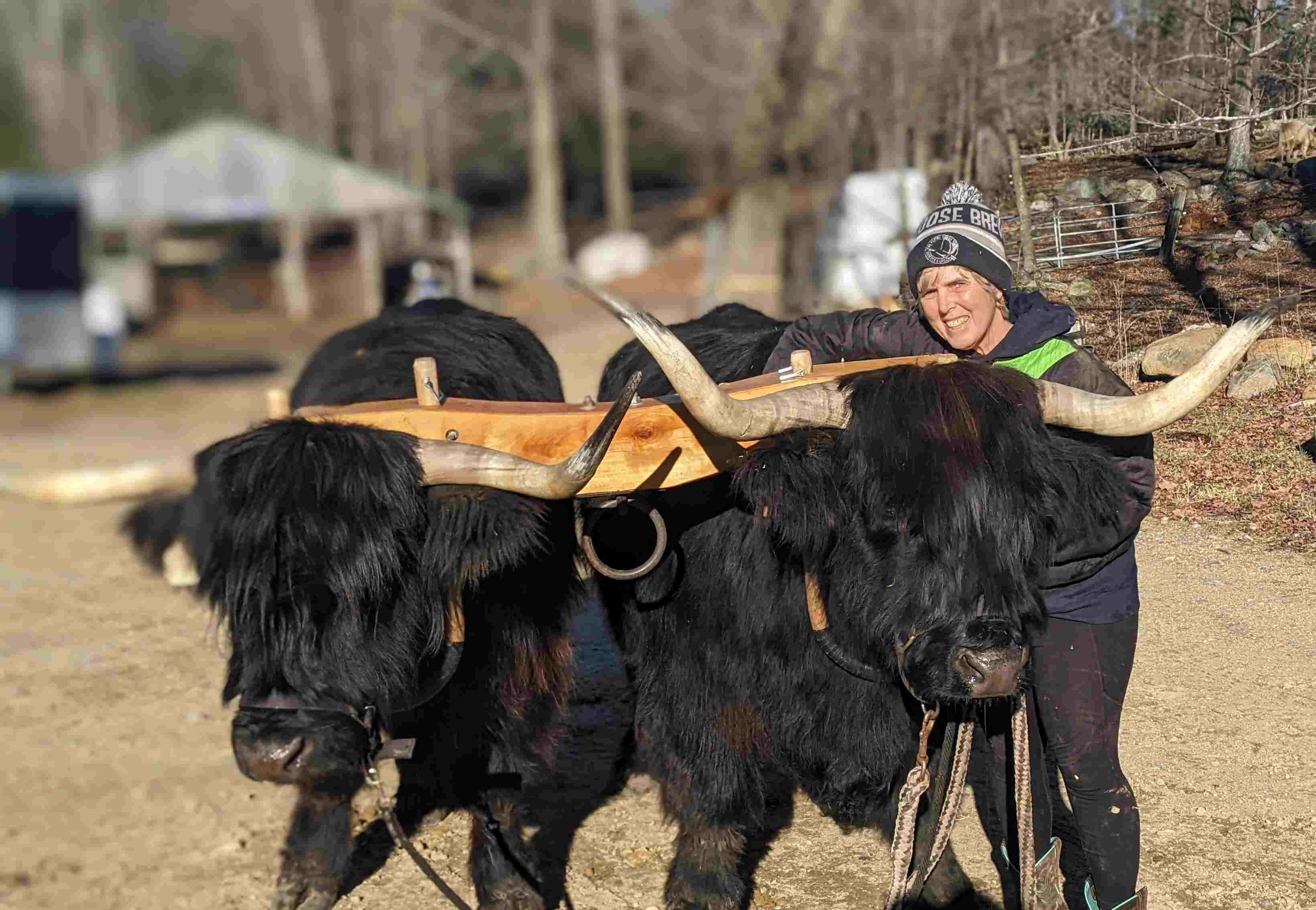Barnyard Etiquette and the Kicking Myth
posted on
July 2, 2023
Day campers at the 2022 Farm Camp at Miles Smith Farm pushed and pulled their calves in the calf show at the end of camp. Contrary to a popular myth, the rear end of a calf is not dangerous. It can be messy but not dangerous.

Every myth has at least a grain of truth. It doesn’t matter how small that truth might be; it gives life to the bigger myth. Here’s one I hear from almost every visitor to the farm. “Don’t stand behind a horse. You’ll get kicked.”
One of my readers wrote, “This is the second time I’ve noticed kids in your pictures at the hind end of the calves. I grew up around horses and cattle and was taught not to be in their kick zone.”
Watching YouTube, you’d think anyone standing behind a horse would get kicked. I’ve seen some horrendous videos of kicking horses. Yes, it happens, but it doesn’t have to.
Politeness Counts
When cows and horses kick, they do it for a reason, not just because a human is behind them.
Just like people, they can’t see behind themselves. If a horse doesn’t see or hear you walking up behind, it might kick without thinking. The trick is to let the horses or cows know you are there. Talk to them, and they won’t be alarmed and won’t kick.
If you startle a stranger from behind, that person might strike out without thinking. Startling a person or animal is not polite and can, in the case of a four-legged creature, get you a kick.
A horse or cow appreciates a word of warning as you approach. Make sure the animal turns its head to see you, and you won’t get kicked. After the animal acknowledges you, it’s polite to touch the horse and run your hand along its body as you walk around them. Then, at least, when you are out of sight, the horse or cow will know where you are by your touch.
Lazy Cows
Also, cattle are lazy. When training a calf, I’ve discovered that they usually only have one or two kicks in them. Some might kick twice, then seem to say, “This is hard work; I’d rather keep my feet on the ground.”
Here’s how I de-kick a calf or cow: I stand at its side and touch the back of a rear leg with a stick. If the animal has a kick in it, it’ll let loose while I stand out of range. After one or two kicks, the animal is “all kicked out” and won’t kick again.
Now, about that “kick zone”: The closer you are to the animal’s butt, the less power the kick has. Boxers know that a knockout punch cannot be delivered in a clinch. Similarly, a kick needs some space to gain the momentum that’ll do damage.
Many people, who don’t know a bull from a heifer, believe in the kicking myth. But when you know the basics of livestock courtesy and safety, you can walk behind a cow or horse and feel confident you won’t be starring in a painful mishap on YouTube.
* * *
Carole Soule's book, "Yes, I Name Them," will be available in September.



